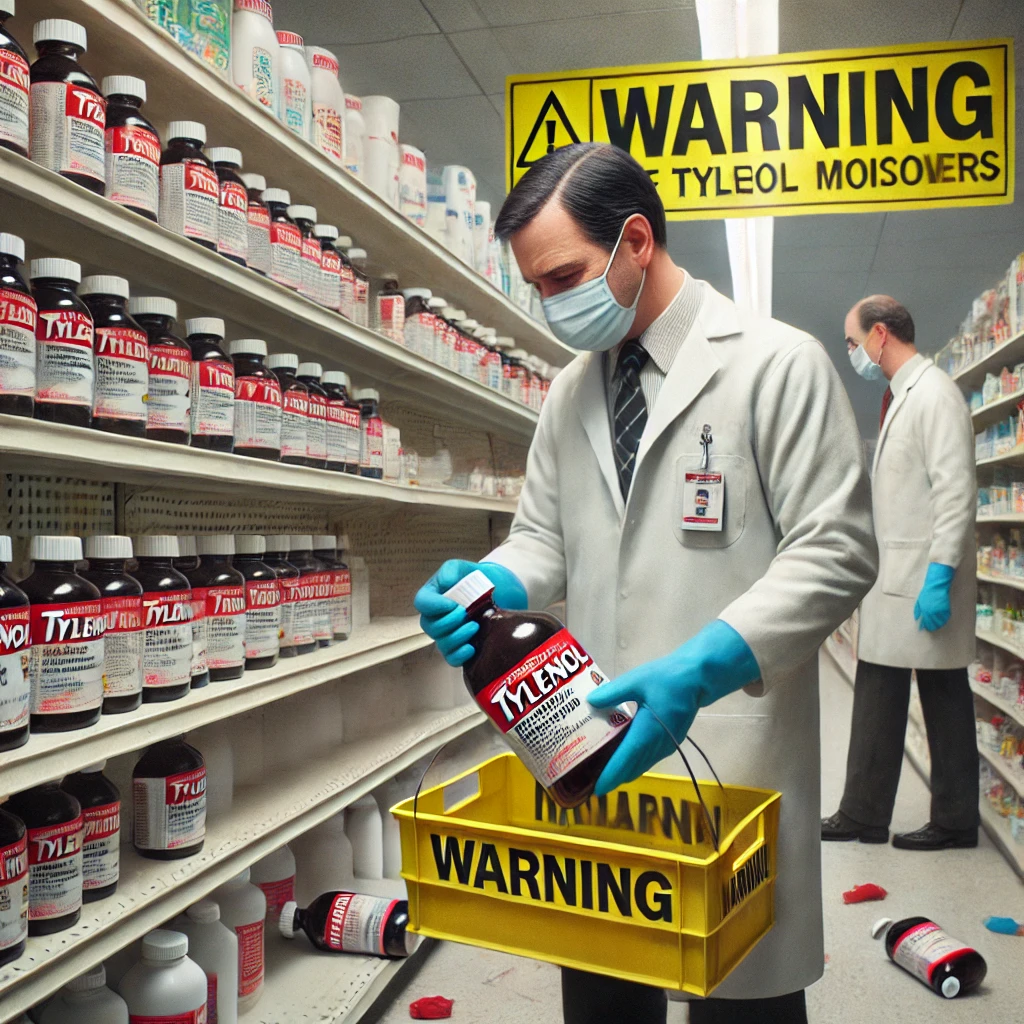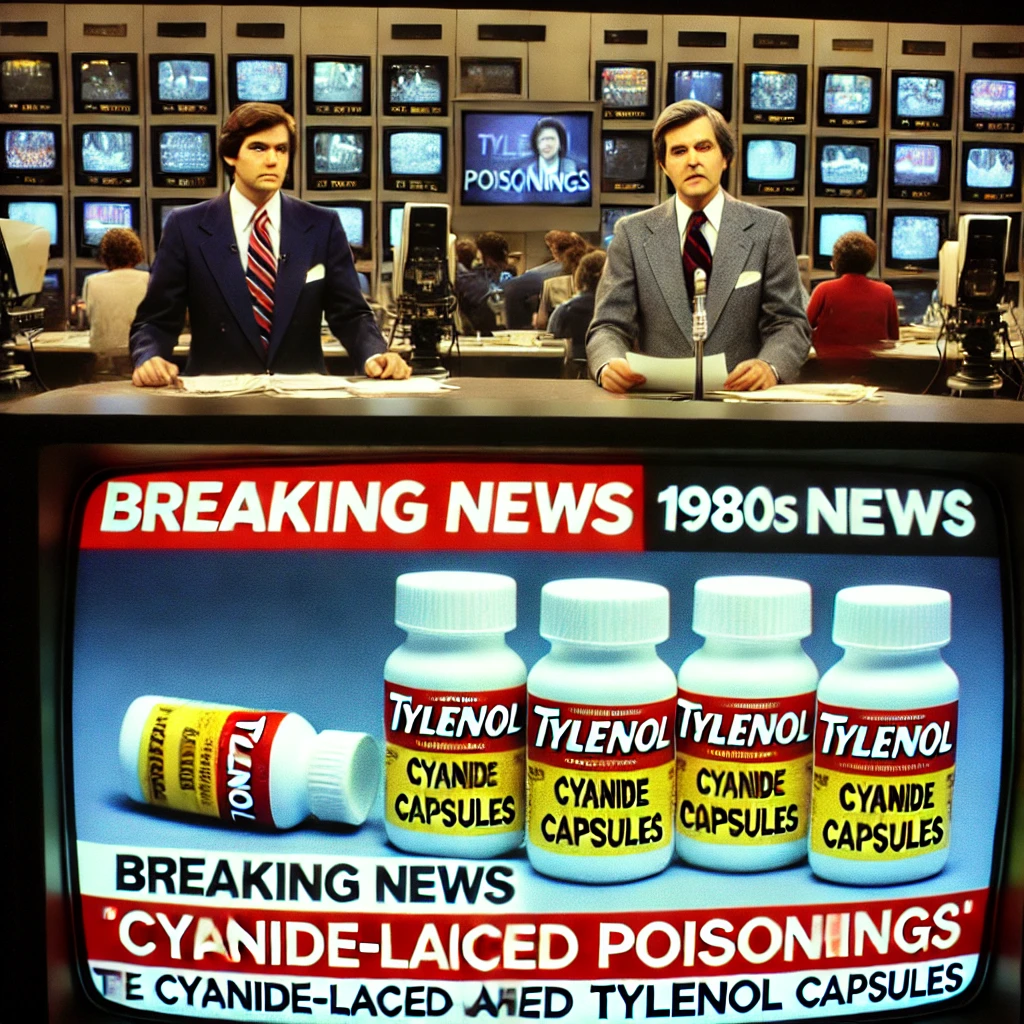On September 30, 1982, a series of tragic events unfolded in the United States when seven people in the Chicago area died after ingesting cyanide-laced Tylenol capsules. This incident not only led to widespread panic but also sparked a national conversation about product safety and consumer protection. The Tylenol murders became a defining moment in corporate responsibility and prompted significant changes in how medications are manufactured and distributed.

The Incident Unfolds
The deaths began when individuals purchased Tylenol capsules from local stores, completely unaware that the over-the-counter pain reliever had been tampered with. The victims experienced severe symptoms and died within hours of consumption, leading to an urgent investigation. Initially, the cause of death was unclear, but soon it was determined that cyanide had been deliberately introduced into the capsules, creating a chilling scenario that raised questions about product safety and public health. As news of the poisonings spread, fear gripped the nation. Media coverage of the incident intensified, with stories highlighting the dangers of over-the-counter medications and the potential for product tampering. The public’s trust in pharmaceutical products began to erode, and the incident triggered a wave of panic buying and product returns, as consumers sought to protect themselves from potential harm.
Impact on the Pharmaceutical Industry
The Tylenol murders had immediate and far-reaching implications for the pharmaceutical industry. Johnson & Johnson, the manufacturer of Tylenol, faced immense pressure to address the crisis and restore consumer confidence. In an unprecedented move, the company swiftly recalled 31 million bottles of Tylenol from store shelves, costing the company over $100 million. This decisive action demonstrated a commitment to consumer safety that resonated with the public.

In the wake of the incident, the pharmaceutical industry implemented significant changes in packaging and safety measures. Tamper-proof packaging became standard practice for over-the-counter medications, and new regulations were introduced to enhance product safety and prevent future tampering. These changes not only aimed to protect consumers but also to restore trust in the industry, which had been shaken by the tragedy.
The Investigation and Its Challenges
The investigation into the Tylenol murders was extensive and complex, involving local, state, and federal law enforcement agencies. Despite their efforts, identifying the perpetrator proved difficult. Investigators explored various leads, including connections to disgruntled employees and individuals with motives for harm, but no clear suspects emerged. The case captured national attention, and the hunt for the killer became a high-profile story. As the investigation unfolded, it highlighted the challenges law enforcement faces in cases involving product tampering. The lack of evidence and the anonymity of the attacker complicated efforts to bring justice. Ultimately, the case remains officially unsolved, with theories about the identity of the perpetrator continuing to circulate over the years. The unresolved nature of the case contributes to the ongoing intrigue surrounding the Tylenol murders.
Lasting Impact on Consumer Safety Regulations
The Tylenol murders had a profound and lasting impact on consumer safety regulations in the United States. In 1983, the Federal Drug Administration (FDA) introduced stricter regulations for packaging and labeling of pharmaceuticals. These regulations included the requirement for tamper-evident seals and improved safety features, ensuring that consumers would be better protected from potential harm. The incident also prompted changes in how companies approached product safety and crisis management. Organizations began to prioritize transparency and communication during crises, recognizing the importance of maintaining consumer trust. The Tylenol murders served as a cautionary tale for companies, emphasizing the need for proactive measures to safeguard public health and safety.

Cultural Reflections and Media Influence
The Tylenol murders not only influenced regulations but also left a mark on American culture. The case has been the subject of numerous documentaries, articles, and true crime features, reflecting society’s fascination with unsolved mysteries and the darker aspects of human behavior. The story of the Tylenol murders continues to resonate, reminding the public of the importance of vigilance in consumer safety.
The cyanide-laced Tylenol incident of September 30, 1982, was a tragic event that forever changed the landscape of consumer safety in the United States. The response from Johnson & Johnson and the subsequent regulatory changes highlighted the importance of prioritizing public health and safety. As we reflect on the lasting impact of the Tylenol murders, we are reminded of the ongoing challenges and responsibilities that come with producing and consuming everyday products. The legacy of this incident continues to shape policies and practices in the pharmaceutical industry, ensuring that consumer safety remains a top priority.
